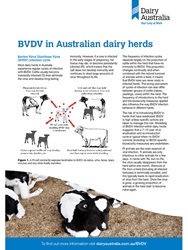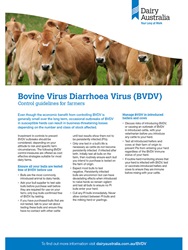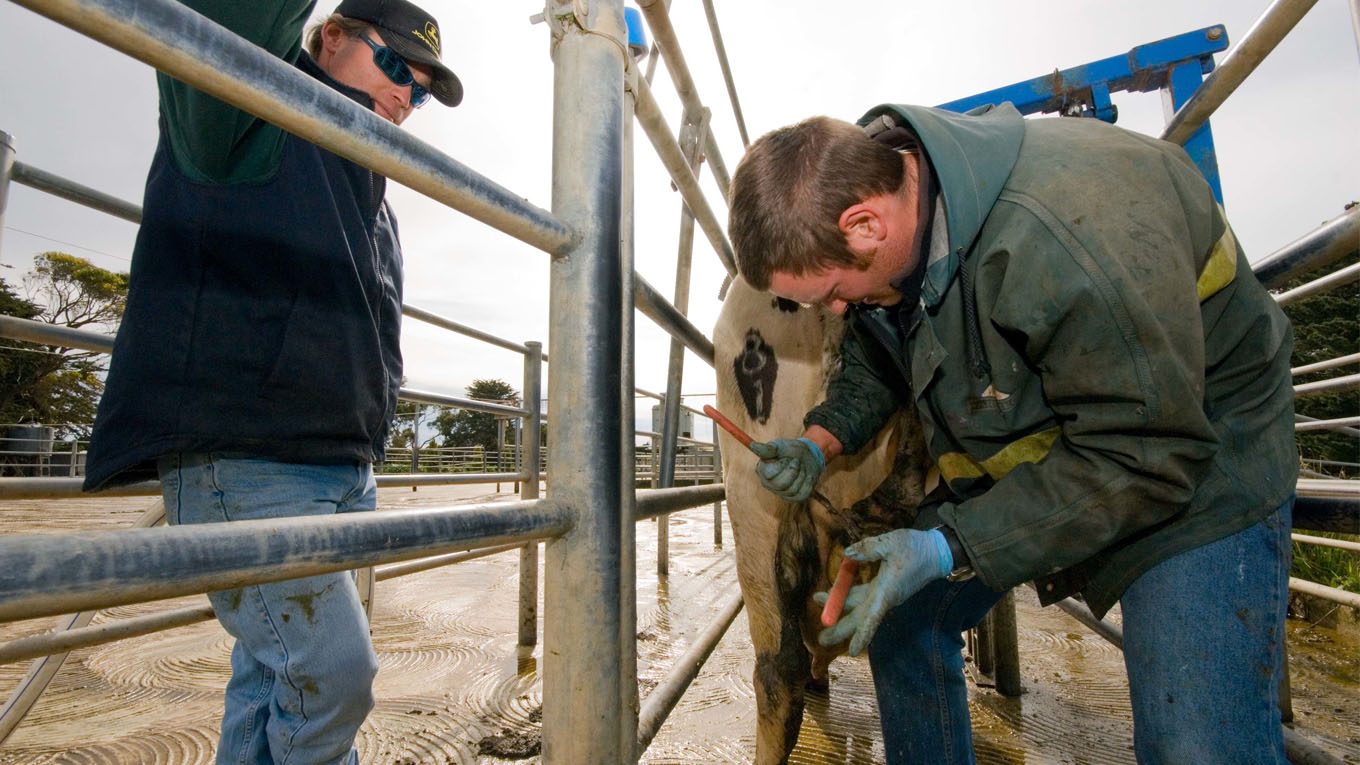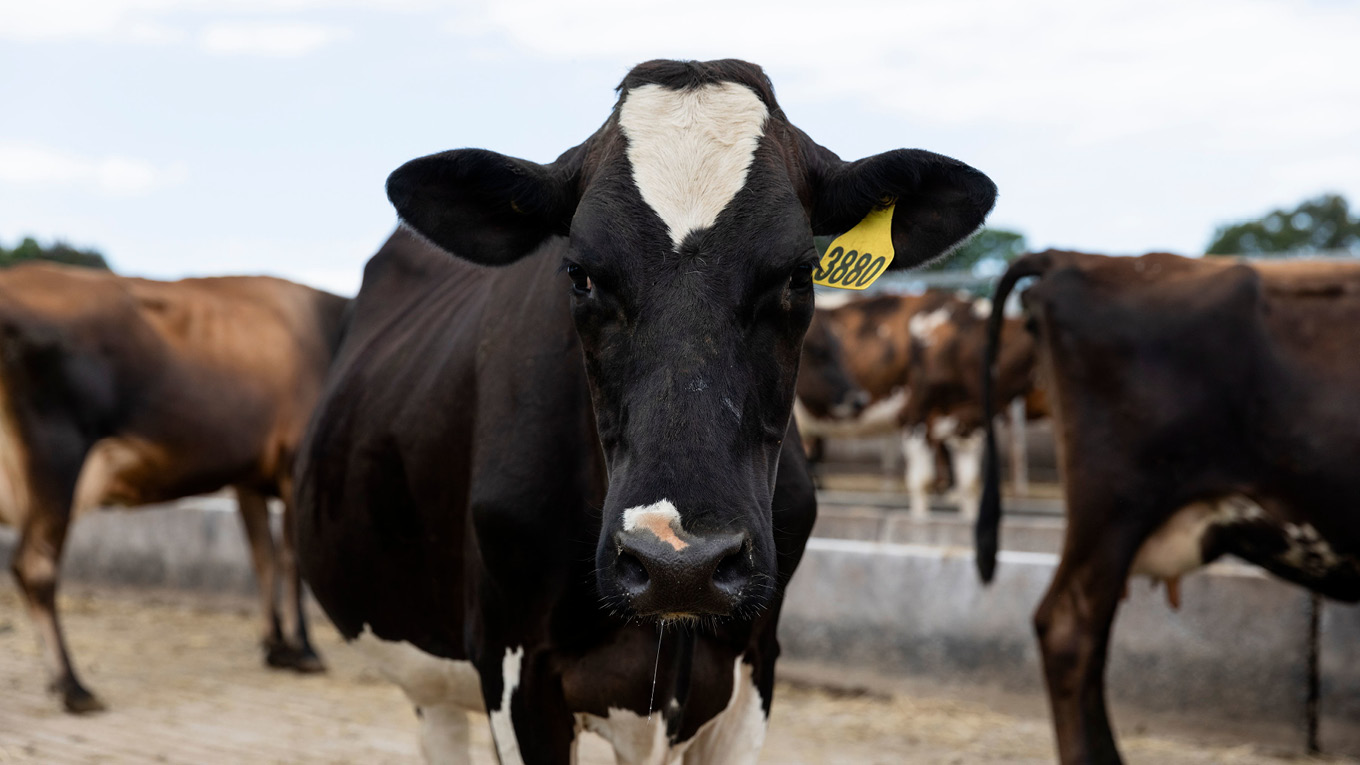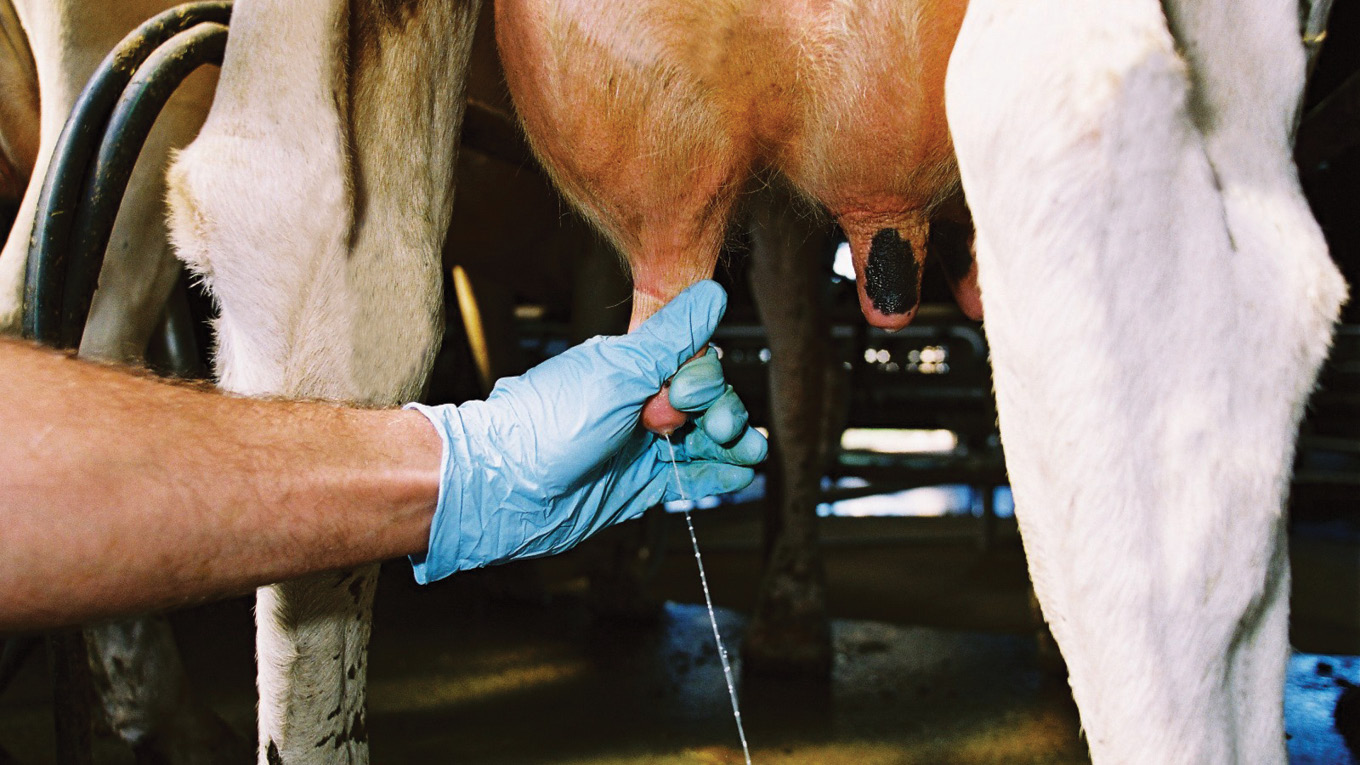Bovine Viral Diarrhoea Virus
What to look for
Bovina Viral Diarrhoea Virus, also known as BVDV or pestivirus, causes a range of symptoms. These may include:
- Poor pregnancy rates
- Abortions and stillbirths
- Birth defects
- Mild diarrhoea
- Increased susceptibility to other diseases
- Ill-thrifty calves that lack a functioning immune system called PIs – persistently infected*.
*PI calves occur when an animal is exposed to BVDV between 90 and 125 days of gestation. These animals shed virus for life and often die prematurely.
Cause
BVDV is caused by a virus common in Australian dairy cattle. It is estimated that about 60% of cattle and 90% of cattle herds in Australia have been exposed to the virus.
Animals likely to be affected
Dairy cattle of all ages are susceptible to BVDV. However, PIs only occur when a pregnant female is exposed to BVDV between 90 and 125 days of gestation.
Spread of the disease
PI animals are the main reservoir of infection within a dairy herd. Animals then become infected when they are either directly exposed to a PI or their bodily fluids.
Confirming the diagnosis
BVDV diagnosis requires laboratory testing by a veterinarian. These include:
Tests looking for the virus itself:
- Blood tests
- Bulk milk (vat) tests
- Tail hair tests
- Ear notch (skin) tests.
Tests looking for exposure to the virus, e.g. antibodies or immunity:
- Blood tests
- Bulk milk (vat) tests.
The most appropriate test to use will depend on and individual situation.
Treatment
There is no treatment for BVDV. PI animals will usually die prematurely or will be culled due to poor performance. Animals exposed to BVDV after birth will clear the virus on their own, however, they may be more susceptible to other diseases in the short-term.
Prevention
Numerous BVDV control strategies are available. The complexity and cost of different strategies varies and must be weighed up against the expected benefits to the farm business. Veterinarians can assist in developing a suitable strategy to control BVDV. A vaccine against BVDV is available.
Testing and removal of all PI animals from a herd typically leads to rapid eradication of the virus from the herd. However, without ongoing vaccination, herd immunity to the virus will decline over time and the risk to the herd if re-introduction occurs is very significant.
More information
These fact sheets have been designed to provide specific advice on the impact and control of BVDV in Australian dairy herds.
